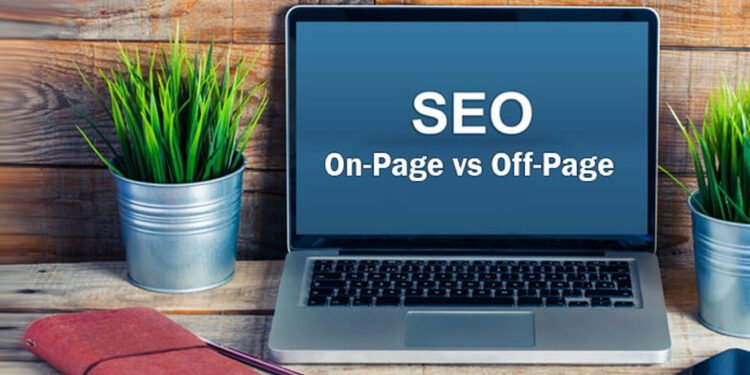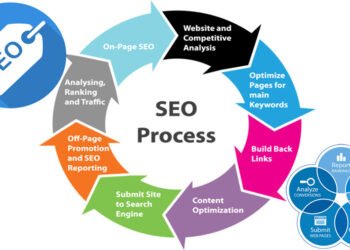When it comes to boosting your website’s visibility and attracting organic traffic, mastering on-page SEO is essential. For those who prefer to handle their own SEO, understanding the core elements of on-page optimization can significantly impact your website’s performance in search engines. This guide will walk you through the fundamental aspects of on-page SEO, providing practical tips and techniques that DIY enthusiasts can implement right away.
What is On-Page SEO?
On-page SEO refers to the practice of optimizing individual web pages to rank higher and earn more relevant traffic in search engines. Unlike off-page SEO, which involves activities like backlink building and social media marketing, on-page SEO focuses on the elements you control directly on your website. This includes optimizing content, HTML source code, and other page elements to improve search engine rankings and user experience.
Key Elements of On-Page SEO
1. Title Tags
Title tags are one of the most important on-page SEO elements. They appear in search engine results as the clickable headline for a given result and are crucial for both user experience and SEO. An effective title tag should be:
- Unique: Each page should have a distinct title tag.
- Descriptive: Clearly describe the content of the page.
- Keyword-Rich: Incorporate primary keywords naturally.
- Length: Aim for 50-60 characters to ensure the full title is visible in search results.
2. Meta Descriptions
Meta descriptions are short summaries of a webpage’s content that appear under the title tag in search results. While meta descriptions do not directly impact rankings, they play a significant role in click-through rates (CTR). A compelling meta description should:
- Be Persuasive: Encourage users to click through to your site.
- Include Keywords: Use relevant keywords that match the search intent.
- Be Within 150-160 Characters: Ensure the description is not cut off in search results.
3. Header Tags
Header tags (H1, H2, H3, etc.) help structure your content and make it easier for both users and search engines to understand the hierarchy and flow of information.
- H1 Tag: Typically used for the page’s main title. Each page should have only one H1 tag, which should include the primary keyword.
- H2 Tags: Used for subheadings that break down the content into sections.
- H3 Tags: Further divide sections into smaller subsections, if necessary.
Using header tags correctly improves readability and helps search engines understand the structure and relevance of your content.
4. URL Structure
A clean and descriptive URL structure is beneficial for SEO. URLs should be:
- Short and Descriptive: Include relevant keywords and be easy to read.
- Hyphen-Separated: Use hyphens (-) rather than underscores (_) to separate words.
- Avoid Special Characters: Keep URLs simple and avoid unnecessary parameters.
For example, instead of “www.example.com/2024/07/29/12345678”, use “www.example.com/ultimate-guide-on-page-seo”.
5. Content Optimization
Content is king in SEO, and optimizing it involves more than just including keywords. Here are key aspects to consider:
- Keyword Placement: Incorporate primary and secondary keywords naturally throughout the content.
- Readability: Write in a clear and engaging style, with short paragraphs and varied sentence structures.
- Use of Multimedia: Enhance content with relevant images, videos, and infographics. Ensure multimedia elements have appropriate alt text for SEO.
- Internal Linking: Use internal links to guide users to related content on your site, which helps with site navigation and SEO.
6. Image Optimization
Images contribute to user experience and SEO. Properly optimized images can improve page load times and enhance search engine rankings. To optimize images:
- Use Relevant Images: Ensure that images are relevant to the content of the page.
- Compress Images: Reduce file sizes without sacrificing quality to improve load times.
- Alt Text: Provide descriptive alt text for each image to improve accessibility and SEO.
7. Mobile Optimization
With a growing number of users accessing websites via mobile devices, mobile optimization is crucial. Ensure your website:
- Is Responsive: Uses a responsive design that adjusts to different screen sizes.
- Has Fast Load Times: Optimize images and reduce unnecessary scripts to enhance mobile performance.
- Provides a Good User Experience: Ensure navigation and content are easily accessible on mobile devices.
8. Page Speed
Page speed is a critical factor for both user experience and SEO. Faster-loading pages provide a better experience for users and are favored by search engines. To improve page speed:
- Minimize HTTP Requests: Reduce the number of elements on your page.
- Use Caching: Implement browser caching to speed up load times for returning visitors.
- Optimize Code: Minimize and combine CSS, JavaScript, and HTML files.
Implementing DIY SEO Strategies
For those interested in a more hands-on approach to SEO, there are resources available to help you manage and optimize your website effectively. Consider exploring DIY SEO for comprehensive tools and guides designed for self-managed SEO.
Conclusion
On-page SEO is a fundamental aspect of improving your website’s visibility and performance in search engine results. By focusing on elements like title tags, meta descriptions, header tags, URL structure, content optimization, image optimization, mobile optimization, and page speed, you can enhance both user experience and search engine rankings. With the right strategies and tools, even DIY enthusiasts can achieve impressive SEO results and drive more organic traffic to their websites.












